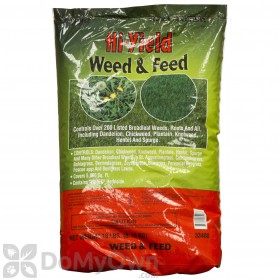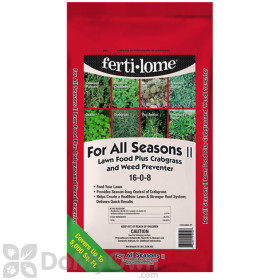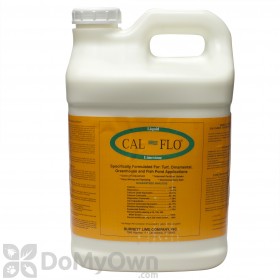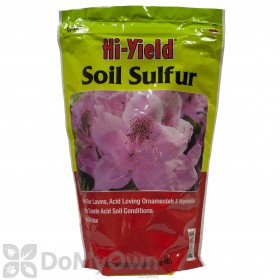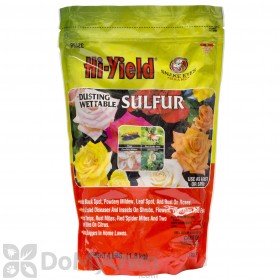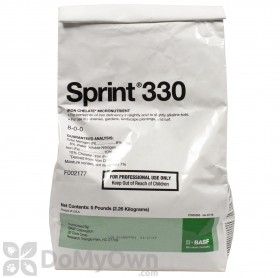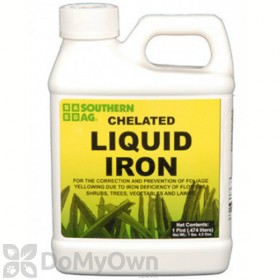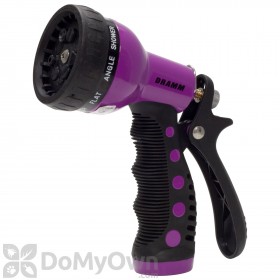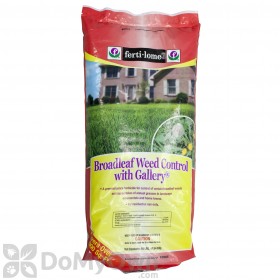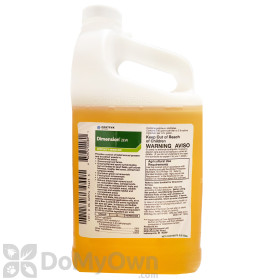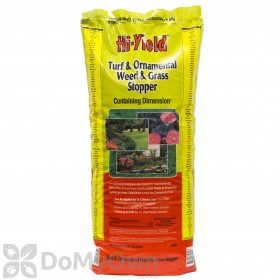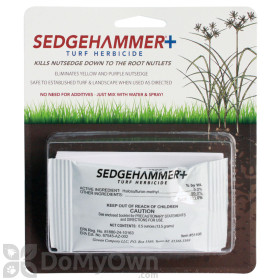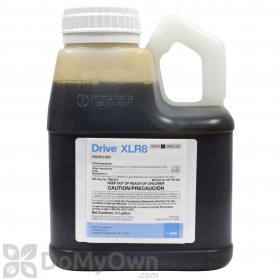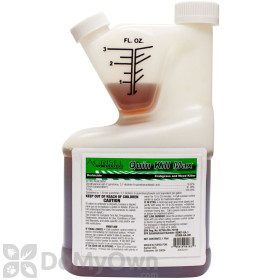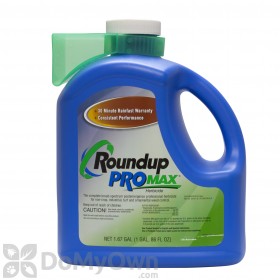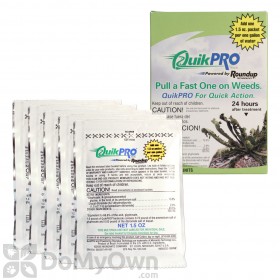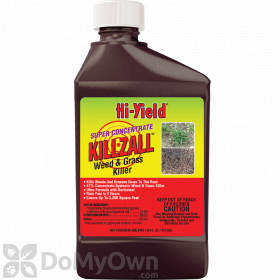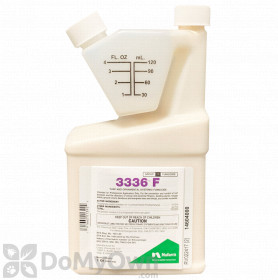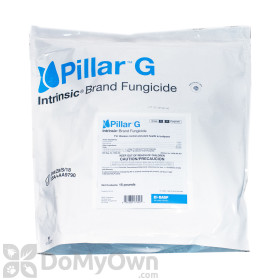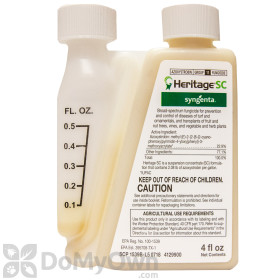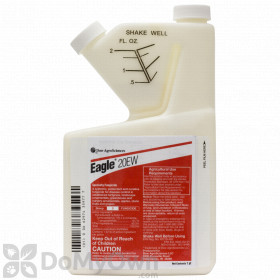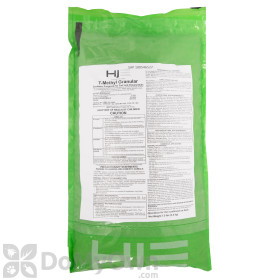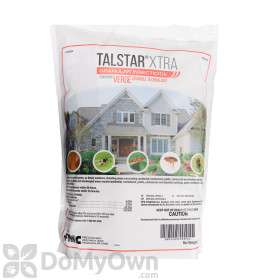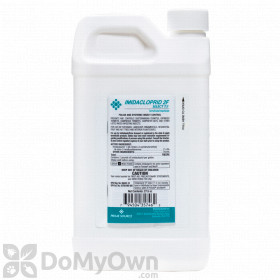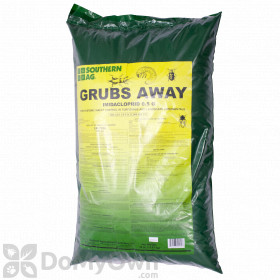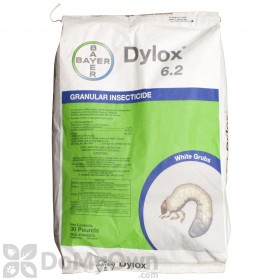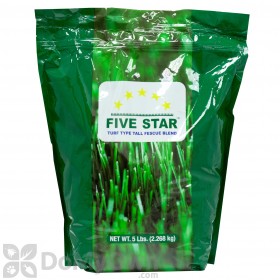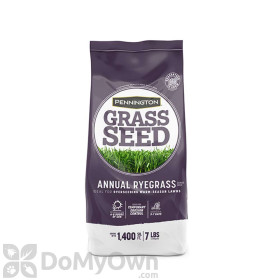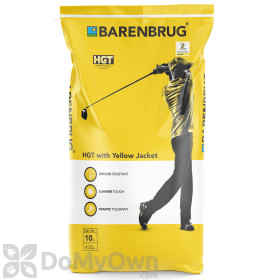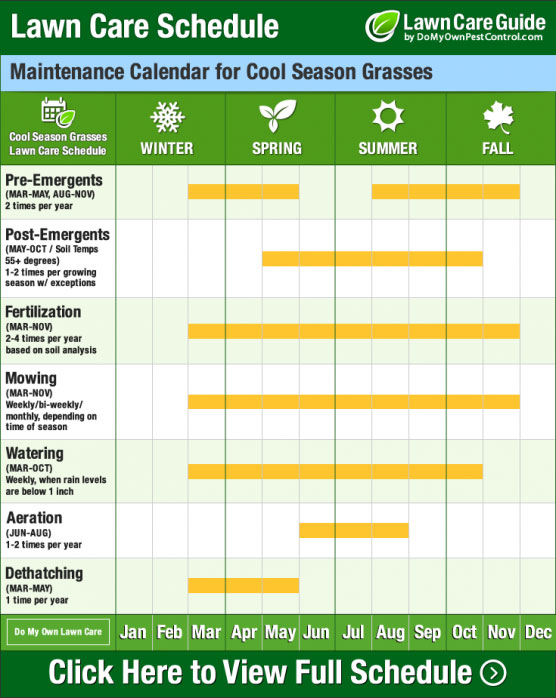Maintenance Calendar For Cool Season Grasses
States With Cool Season Grasses: Connecticut, Delaware, Idaho, Iowa, Massachusetts, Maryland, Maine, Michigan, Minnesota, Montana, Nebraska, New Hampshire, New Jersey, New York, North Dakota, Oregon, Pennsylvania, Rhode Island, South Dakota, Utah, Vermont, Washington, Wisconsin, Wyoming
Common Cool Season Grass Types: Kentucky Bluegrass, Annual Ryegrass, Perennial Ryegrass, Fine Fescue, Tall Fescue, Creeping Bentgrass, Blend
Cool Season Lawn Care Schedule
Cool Season Grasses Lawn Care Schedule |
Winter |
Spring |
Summer |
Fall |
||||||||||||
|---|---|---|---|---|---|---|---|---|---|---|---|---|---|---|---|---|
|
Treatment Applications
|
||||||||||||||||
| Pre-Emergents (North) |
|
|
|
|
||||||||||||
| Pre-Emergents (South) |
|
|
|
|
||||||||||||
| Post-Emergents |
|
|
|
|
||||||||||||
| Fertilizers (Synthetic) |
|
|
|
|
||||||||||||
| Fertilizers (Organic) |
|
|
|
|
||||||||||||
| Insecticides |
|
|
|
|
||||||||||||
| Grub Prevention |
|
|
|
|
||||||||||||
| Fungicides |
|
|
|
|
||||||||||||
| Iron† |
|
|
|
|
||||||||||||
| pH - Lime/Sulfur† |
|
|
|
|
||||||||||||
|
Lawn Maintenance
|
||||||||||||||||
| Soil Testing* |
|
|
|
|
||||||||||||
| Watering |
|
|
|
|
||||||||||||
| Mowing |
|
|
|
|
||||||||||||
| Dethatching |
|
|
|
|
||||||||||||
| Aeration |
|
|
|
|
||||||||||||
| Seeding |
|
|
|
|
||||||||||||
 |
|
|
|
|
||||||||||||
† based on soil test results * once a year
Fertilization
(March-May and September-November) 2-4 times per year based on soil analysis
Pro Tip
When fertilizing in the spring you can choose to use a "weed and feed." These products contain both a fertilizer and a pre-emergent herbicide.
Soil Testing
One time per year - Fall or Spring
The best time to do a soil test is usually in the fall when conditions are relatively dry, but the spring is also a good time to do a soil test. By performing a test in the fall, you can have time to apply any soil amendments before spring green up.
Soil pH
Lime or Sulfur Applications: May - August
Iron Applications
May - August
Mowing
(March-November) Weekly to start, then every 2 weeks, then monthly at the end of the season
Your lawn should be mowed consistently, but when applying fertilizers, pre-emergent herbicides, or insecticide applications to your lawn, read labels carefully since some have mowing restrictions before application, and some have mowing restrictions after application. During spring you may need to mow as often as once per week. During summer mowing is less frequent and usually once every 2 weeks is sufficient. Finally during fall as the temperatures start to drop you may need to mow once a month until the grass starts to go into a dormant stage and mowing will cease. This typically happens once temperatures start consistently reaching 50-55 F for about 1 week.
Watering
(June-September) Weekly when rain levels are below 1 inch
Deep, infrequent waterings help to encourage deep root growth. Shallow, frequent waterings lead to shallow root growth and weak roots.
Water in the early morning to avoid scorching and to make sure the blades are dry before the humidity sets to prevent lawn diseases. If you get less than 1" of precipitation in a week it is time to consider watering your lawn. It is not recommended that you water more than 1" of water per watering.Aeration
(March-April and August-October) 1-2 times per year
Core aeration is the best way to go here, and you can rent an aeration machine for larger lawns and a hand corer for smaller areas. Cores of earth are removed (and left on your lawn for extra nutrients) and holes left in your lawn, which will eventually be filled in with new grass.
If you do plan to schedule an aeration for your lawn it is important that any pre-emergent herbicide be applied after the aeration is completed.Dethatching
(March-May) 1 time per year
Dethatching generally includes power raking or using a verticutting machine to remove the excess thatch. Aeration can also accomplish a similar result.
If you do plan to schedule a dethatching for your lawn it is important that any pre-emergent herbicide be applied after the dethatching is completed.Weed Control
You can control almost all turf weeds with either pre-emergent or post-emergent weed control products.
Pre-Emergents
(February-May and August-November) 2 times per year
Timing is very important! Please be sure sure to refer to the product label for mowing restrictions prior to and after herbicide applications as mowing can negatively impact the efficacy of the herbicide.
Post-Emergents
(February-November) 1-2 times per growing season, or as needed (with non-selective herbicides)
Please be sure sure to refer to the product label for mowing restrictions prior to and after herbicide applications as mowing can negatively impact the efficacy of the herbicide.
For more information about treating specific weeds in your lawn or landscape, check out our Weed Control Treatment Guides.
Fungicides
(May-August) Every 14-28 days as preventative applications; as needed for curative applications
While different lawn diseases develop under different conditions, some of the most common lawn diseases, including Brown Patch, Dollar Spot, and Anthracnose, often occur in late spring, throughout the summer, and into fall. By applying preventative fungicide treatments to your lawn every 14 to 28 days starting in the late spring and continuing to the end of summer you can defend against these diseases. It is important to rotate fungicides to help prevent disease resistance. Once a lawn disease has taken hold in your turf, a curative fungicide treatment can help stop the disease progression.
Pro Tip
The DoMyOwn Turf Box can help take the guesswork out of selecting preventative fungicides for your lawn. Sign up today to help keep your lawn disease-free.
Insecticides
March - September
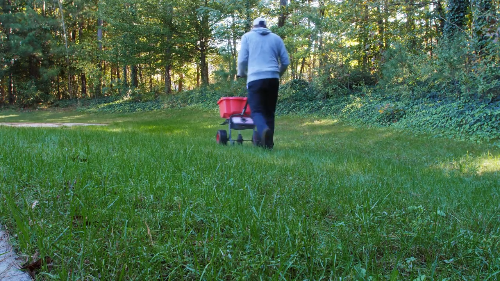
Grub Prevention
April - May
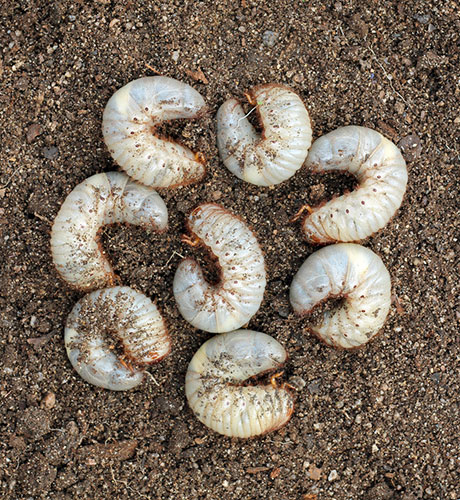
Seeding
August - October





